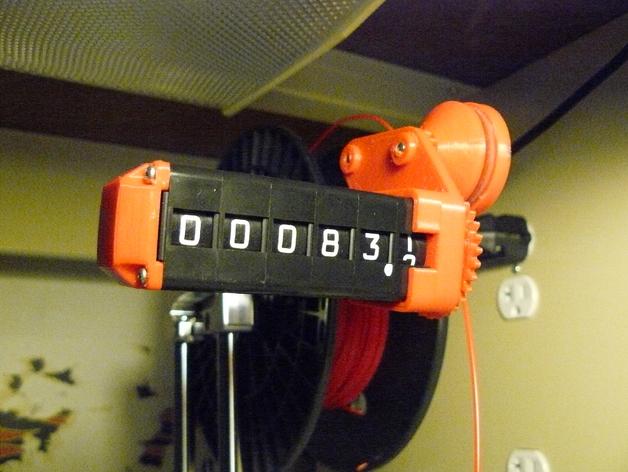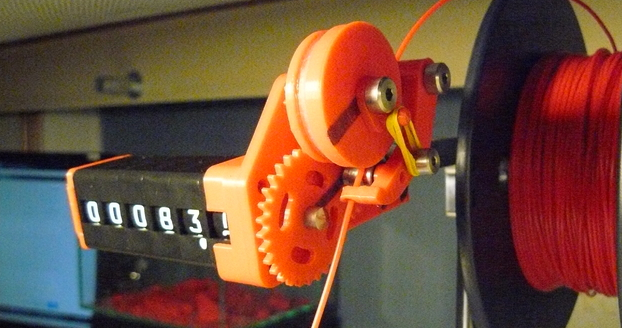 If you have any experience with 3D printing, you know that a spool of filament can yield a good deal. Thanks to our friends at MakerBot, we can give you some actual numbers or, more accurately, a bit of perspective, on the subject as we know that it’s pretty clear that 1 kg of filament is going to yield about 1 kg of 3D-printed objects. If you’re not using exactly 1 kg of filament to print an object, then you’re going to want to keep track of how much filament you used on a given job.
If you have any experience with 3D printing, you know that a spool of filament can yield a good deal. Thanks to our friends at MakerBot, we can give you some actual numbers or, more accurately, a bit of perspective, on the subject as we know that it’s pretty clear that 1 kg of filament is going to yield about 1 kg of 3D-printed objects. If you’re not using exactly 1 kg of filament to print an object, then you’re going to want to keep track of how much filament you used on a given job.
Some 3D printing experts at MakerBot did the math: A 1 kg spool of filament will yield 392 small-size chess pieces (like the pieces in an inexpensive box set). That translates to just over 12 complete plastic chess sets. Of course, your game could become rather confusing from the outset if all of the pieces are printed in the same color. In any case, it’s helpful to have a frame of reference and to get a sense of just what’s possible with only 1 kg of filament.
Keeping track of how much filament you’re using is a helpful way to monitor usage and to know when you’re going to need to change a spool in the midst of a printing job. MakerBot Thingiverse contributor, Kyle Gagnon or “UserUnrelated” in the MakerBot realm, has designed a mostly 3D-printed filament counter, which you can print and assemble yourself for around $100.
Gagnon’s counter uses the core of a Veeder Root non-resettable, 5-digit rotary counter. He’s added a decimal point with white correction fluid since the counter displays the 1/10 place. Gagnon, a recent college graduate in Mechanical Engineering, says he’s working on version 2 of his counter, which will be far less expensive to produce as it will utilize an electromechanical counter that relies on a 5v pulse signal and costs about $4 on EBay. For the moment, if you want to make your own counter, you will need to go with Gagnon’s current instructions unless you have a counter that will work with the parts he has designed and for which he has shared the STL files.
There are no instructions for assembling the counter on Gagnon’s Thingiverse nor is there a list of materials required to finish the job. From what we gather from his short text, the counter features a “simple zip-tie bracket for the aluminum handle of a PrintrBot Simple Metal.” In addition, it looks like you’re going to need some rubber bands, a bit of glue, and some bolts, all of which in one way or another hold the thing together. We imagine that if you run into problems assembling your counter, in the spirit of the maker movement, Gagnon would be more than happy to offer more detailed instructions. From the looks of the comments, it seems that there are other makers at Thingiverse who appreciated Gagnon’s invention and also offered some suggestions for improving or augmenting the device.
Have you tried printing and assembling this device? Let us know your experience in the 3D Printer Filament Counter forum thread on 3DPB.com
Subscribe to Our Email Newsletter
Stay up-to-date on all the latest news from the 3D printing industry and receive information and offers from third party vendors.
You May Also Like
Further Understanding of 3D Printing Design at ADDITIV Design World
ADDITIV is back once again! This time, the virtual platform for additive manufacturing will be holding the first-ever edition of ADDITIV Design World on May 23rd from 9:00 AM –...
3D Printer Maker EVO-tech Reborn as NEVO3D — Once More With Feeling
EVO-tech was a 3D printing service and original equipment manufacturer established in 2013 and based in Schörfling am Attersee, Austria. The company produced high-quality material extrusion systems featuring linear bearings,...
3D Systems Brings 3D Printed PEEK Cranial Implant to the U.S. with FDA Clearance
For more than 10 years, 3D Systems (NYSE:DDD) has worked hand-in-hand with surgeons to plan over 150,000 patient-specific cases, and develop more than two million instruments and implants from its...
CDFAM Returns to Berlin for Second Annual Symposium
The second CDFAM Computational Design Symposium is scheduled for May 7-8, 2024, in Berlin, and will convene leading experts in computational design across all scales. Building upon the first event...
































